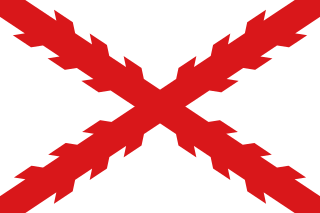 W
WSpanish Florida was the first major European land claim and attempted settlement in North America during the European Age of Discovery. La Florida formed part of the Captaincy General of Cuba, the Viceroyalty of New Spain, and the Spanish Empire during Spanish colonization of the Americas. While its boundaries were never clearly or formally defined, the territory was initially much larger than the present-day state of Florida, extending over much of what is now the southeastern United States, including all of present-day Florida plus portions of Georgia, Alabama, Mississippi, North Carolina, South Carolina, and Louisiana. Spain's claim to this vast area was based on several wide-ranging expeditions mounted during the 16th century. A number of missions, settlements, and small forts existed in the 16th and to a lesser extent in the 17th century; eventually they were abandoned due to pressure from the expanding English and French colonial projects, the collapse of the native populations, and the general difficulty in becoming agriculturally or economically self-sufficient. By the 18th century, Spain's control over La Florida did not extend much beyond a handful of forts near St. Augustine, St. Marks, and Pensacola, all within the boundaries of present-day Florida.
 W
WThe Adams–Onís Treaty of 1819, also known as the Transcontinental Treaty, the Florida Purchase Treaty, or the Florida Treaty, was a treaty between the United States and Spain in 1819 that ceded Florida to the U.S. and defined the boundary between the U.S. and New Spain. It settled a standing border dispute between the two countries and was considered a triumph of American diplomacy. It came in the midst of increasing tensions related to Spain's territorial boundaries in North America against the United States and the United Kingdom in the aftermath of the American Revolution; it also came during the Latin American wars of independence.
 W
WThe Amelia Island affair was an episode in the history of Spanish Florida.
 W
WAnhaica was the principal town of the Apalachee people, located in what is now Tallahassee, Florida. In the early period of Spanish colonization, it was the capital of the Apalachee Province. The site, now known as Martin Archaeological Site, was rediscovered in 1988.
 W
WThe Apalachee massacre was a series of raids by English colonists from the Province of Carolina and their Indian allies against a largely peaceful population of Apalachee Indians in northern Spanish Florida that took place in 1704, during Queen Anne's War. Against limited Spanish and Indian resistance, a network of missions was destroyed; most of the population either was killed or captured, fled to larger Spanish and French outposts, or voluntarily joined the English.
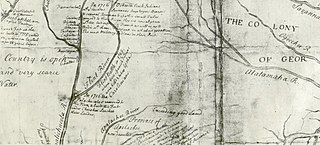 W
WThe Battle of Flint River was a failed attack by Spanish and Apalachee Indian forces against Creek Indians in October 1702 in what is now the state of Georgia. The battle was a major element in ongoing frontier hostilities between English traders from the Province of Carolina and Spanish Florida, and it was a prelude to more organized military actions of Queen Anne's War.
 W
WEast Florida was a colony of Great Britain from 1763 to 1783 and a province of Spanish Florida from 1783 to 1821. Great Britain gained control of the long-established Spanish colony of La Florida in 1763 as part of the treaty ending the French and Indian War. Deciding that the territory was too large to administer as a single unit, Britain divided Florida into two colonies separated by the Apalachicola River: East Florida with its capital in St. Augustine and West Florida with its capital in Pensacola. East Florida was much larger and comprised the bulk of the former Spanish territory of Florida and most of the current state of Florida. The sparsely populated Florida colonies remained loyal to Great Britain during the American Revolutionary War. However, as part of the 1783 treaty in which Britain officially recognized the independence of its former American colonies, it also ceded both Floridas back to Spain, which maintained them as separate colonies while moving the boundary east to the Suwannee River.
 W
WWest Florida was a colony of the Kingdom of Great Britain from 1763 until 1783 when it was ceded to Spain as part of the Peace of Paris.
The Calusa were a Native American people of Florida's southwest coast. Calusa society developed from that of archaic peoples of the Everglades region. Previous indigenous cultures had lived in the area for thousands of years.
 W
WThe Castillo de San Marcos is the oldest masonry fort in the continental United States; it is located on the western shore of Matanzas Bay in the city of St. Augustine, Florida. The Castillo was designed by the Spanish engineer Ignacio Daza, with construction beginning in 1672, 107 years after the city's founding by Spanish Admiral and conquistador Pedro Menéndez de Avilés, when Florida was part of the Spanish Empire. The fort's construction was ordered by Governor Francisco de la Guerra y de la Vega after a raid by the English privateer Robert Searles in 1668 that destroyed much of St. Augustine and damaged the existing wooden fort. Work proceeded under the administration of Guerra's successor, Manuel de Cendoya in 1671, and the first coquina stones were laid in 1672. The construction of the core of the current fortress was completed in 1695, though it would undergo many alterations and renovations over the centuries.
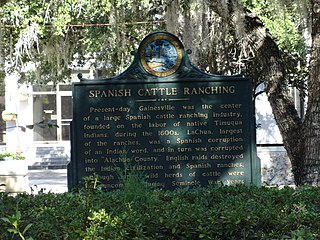 W
WCattle ranching was an important industry in Spanish Florida in the second half of the seventeenth century. The Spanish were in Florida for almost a century before ranching became widespread in the colony. Late in the seventeenth century, ranches were located along the middle St. Johns River, in Potano Province, and in Apalachee Province. Ranches flourished despite conflicts with the native people of Florida. Attacks by the English colony, the Province of Carolina, and its native allies brought an abrupt end to ranching in Florida at the beginning of the eighteenth century.
 W
WDe Soto National Memorial, in Manatee County 5 miles (8.0 km) west of Bradenton, Florida, commemorates the 1539 landing of Hernando de Soto and the first extensive organized exploration by Europeans of what is now the southern United States.
 W
WThe Florida Parishes, on the east side of Mississippi River – an area also known as the Northshore or Northlake region – are eight parishes in southeast Louisiana, United States, which were part of West Florida in the 18th and early 19th centuries. Unlike most of the state, this region was not part of the 1803 Louisiana Purchase; it had been under British and then Spanish control since 1763.
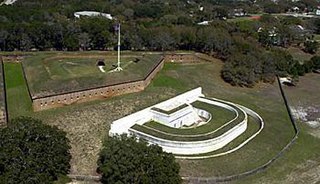 W
WFort Barrancas (1839) or Fort San Carlos de Barrancas is a United States military fort and National Historic Landmark in the former Warrington area of Pensacola, Florida, located physically within Naval Air Station Pensacola, which was developed later around it.
 W
WFort Matanzas National Monument was designated a United States National Monument on October 15, 1924. The monument consists of a 1740 Spanish fort called Fort Matanzas, and about 100 acres (0.4 km²) of salt marsh and barrier islands along the Matanzas River on the northern Atlantic coast of Florida. It is operated by the National Park Service in conjunction with the Castillo de San Marcos National Monument in the city of St. Augustine.
 W
WFort Mose Historic State Park is a U.S. National Historic Landmark, located two miles north of St. Augustine, Florida, on the edge of a salt marsh on the western side of the waterway separating the mainland from the coastal barrier islands. The original site of the 18th-century fort was uncovered in a 1986 archeological dig. The 24-acre (9.7 ha) site is now protected as a Florida State Park, administered through the Anastasia State Recreation Area. Fort Mose is the "premier site on the Florida Black Heritage Trail". In 1738, the Spanish governor of Florida, Manuel de Montiano, had Fort Mose built and established as a free black settlement, the first to be legally sanctioned in what would become the territory of the United States. The fort has also been known as Fort Moosa or Fort Mossa, variants of the Spanish pronunciation.
 W
WThe Battle of Fort Mose was a significant action of the War of Jenkins' Ear, which took place on June 26, 1740. Captain Antonio Salgado commanded a Spanish column of 300 regular troops, backed by the free black militia and allied Seminole warriors consisting of Indian auxiliaries. They stormed Fort Mose, a strategically crucial position newly held by 170 British soldiers under Colonel John Palmer. This garrison had taken the fort as part of James Oglethorpe's offensive to capture St. Augustine. Taken by surprise, the British garrison was virtually annihilated. Colonel Palmer, three captains and three lieutenants were among the British troops killed in action. The battle destroyed the fort. The Spanish did not rebuild it until 1752.
 W
WFort San Juan was a late 16th-century fort built by the Spanish under the command of conquistador Juan Pardo in the native village of Joara, in what is now Burke County, North Carolina. Used as an outpost for Pardo's expedition into the interior of what was known to the Spaniards as "la Florida", Fort San Juan was the foremost of six forts built and garrisoned by Pardo in modern-day North Carolina, South Carolina, and Tennessee to extend Spain's effective control deeper into the North American continent.
 W
WThe Fountain of Youth is a mythical spring that restores the youth of anyone who drinks or bathes in its waters. Tales of such a fountain have been recounted around the world for thousands of years, appearing in the writings of Herodotus, the Alexander romance, and the stories of Prester John. Stories of similar waters were also prominent among the people of the Caribbean during the Age of Exploration, who spoke of the restorative powers of the water in the mythical land of Bimini. Based on these many legends, explorers and adventurers looked for the elusive Fountain of Youth or some other remedy to aging, generally associated with magic waters. These waters might have been a river, a spring, or any other water source that was said to reverse the aging process and cure sickness when drunk or bathed in.
 W
WProspect Bluff Historic Sites is located in Franklin County, Florida, on the Apalachicola River, 6 miles (9.7 km) SW of Sumatra, Florida. The site contains the ruins of two forts – the earlier "Negro Fort", which was constructed by the British in 1814. The British allowed fugitive slaves and Creek tribesmen that had taken refuge with them to occupy it after they evacuated Florida, but the fort was destroyed in an attack from U.S. forces in 1816 including a barrage of cannonballs from gunboats. Fort Gadsden was built in 1818 within the former walls of Negro Fort. The site has been known by several other names at various times, including Prospect Bluff, British post, Nicholls' Fort, Blount's Fort, Fort Blount, African Fort, and Fort Apalachicola.
 W
WThe González–Alvarez House, also known as The Oldest House, is a historic house museum at 14 St. Francis Street in St. Augustine, Florida. With a construction history dating to about 1723, it is believed to be the oldest surviving house in St. Augustine. It is also an important example of the St. Augustine's Spanish colonial architectural style, with later modifications by English owners. It was designated a U.S. National Historic Landmark in 1970. The house is now owned by the St. Augustine Historical Society and is open for public tours as part of the Oldest House Museum Complex. Evidence can be seen of the Spanish, British, and American occupations of St. Augustine.
 W
WThe Gulf Coast campaign or the Spanish conquest of West Florida in the American Revolutionary War, was a series of military operations primarily directed by the governor of Spanish Louisiana, Bernardo de Gálvez against the British province of West Florida. Begun with operations against British positions on the Mississippi River shortly after Britain and Spain went to war in 1779, Gálvez completed the conquest of West Florida in 1781 with the successful siege of Pensacola.
 W
WThis is a list of sites and peoples visited by the Hernando de Soto Expedition in the years 1539–1543. In May 1539, de Soto left Havana, Cuba, with nine ships, over 620 men and 220 surviving horses and landed at Charlotte Harbor, Florida. This began his three-year odyssey through the Southeastern North American continent, from which de Soto and a large portion of his men would not return. They met many varied Native American groups, most of them bands and chiefdoms related to the widespread Mississippian culture. Only a few of these cultures survived into the seventeenth century. Others have been recorded only in the written historical accounts of de Soto's expedition.
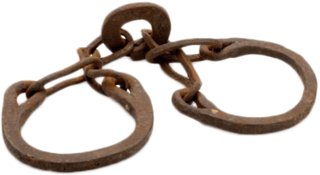 W
WNative Americans living in the American Southeast were enslaved through warfare and purchased by European colonists throughout the 17th, 18th, and 19th centuries, as well as held in captivity through Spanish-organized forced labor systems in Florida. Emerging colonies in Virginia, Carolina, and Georgia imported Native Americans and incorporated them into chattel slavery systems, where they intermixed with slaves of African descent, who would come to outnumber them. Their demand for slaves affected communities as far west as present-day Illinois and the Mississippi River and as far south as the Gulf Coast. The trade in enslaved Native Americans sent tens of thousands of them outside the region to New England and the Caribbean as a profitable export.
 W
WThe Jungle Prada Site is an archaeological site featuring Indigenous Tocobaga mounds and the location of the historical Narváez expedition landing. The Jungle Prada site spans public and private property, including the Jungle Prada de Narvaez city park, in St. Petersburg of Pinellas County, western coastal Florida, in the Southern United States.
The Mayaimi were Native American people who lived around Lake Mayaimi in the Belle Glade area of Florida from the beginning of the Common Era until the 17th or 18th century. In the languages of the Mayaimi, Calusa, and Tequesta tribes, Mayaimi meant "big water." The origin of the language has not been determined, as the meanings of only ten words were recorded before extinction. The linguist Julian Granberry states that the language of the Calusa, Mayaimi and Tequesta people is related to the Tunica language. The current name, Okeechobee, is derived from the Hitchiti word meaning "big water". The Mayaimis have no linguistic or cultural relationship with the Miamis of Great Lakes region. The city of Miami is named after the Miami River, which derived its name from Lake Mayaimi.
 W
WThe State of Muskogee was a proclaimed sovereign nation located in Florida, founded in 1799 and led by William Augustus Bowles, a Loyalist veteran of the American Revolutionary War who lived among the Muscogee, and envisioned uniting the American Indians of the Southeast into a single nation that could resist the expansion of the United States. Bowles enjoyed the support of the Miccosukee (Seminole) and several bands of Muscogee. He envisioned his state as eventually growing to encompass the Cherokee, Upper and Lower Creeks, Choctaw, and Chickasaw, in parts of present-day Georgia and Alabama.
 W
WThe Narváez expedition was a Spanish journey of exploration and colonization started in 1527 that intended to establish colonial settlements and garrisons in Florida. The expedition was initially led by Pánfilo de Narváez, who died in 1528. Many more people died as the expedition traveled west along the explored Gulf Coast of the present-day United States and into the American Southwest. Only four of the expedition's original members survived, reaching Mexico City in 1536. These survivors were the first known Europeans, and the first African, to see the Mississippi River, and to cross the Gulf of Mexico and Texas.
 W
WNeamathla was a leader of the Red Stick Creek (1750s–1841). His name, in the Hitchiti (Mikasuki) language, means "fat next to warrior", "fat" being a reference to great courage. The Hitchiti language had no written form, but modern scholars agree that Eneah Emathla is the "proper" spelling of his name in English; however, there were two other men also named Eneah Emathla, so the modern convention is to use the spelling Neamathla for the leader.
 W
WThe Battle of Negro Fort was a brief and destructive siege of a fortification filled with fugitive slaves, free blacks, and Choctaw by the United States and their Creek allies. On Prospect Bluff, overlooking the Apalachicola River, a settlement and fortification that Andrew Jackson and other white Americans labeled Negro Fort existed for a brief period. It was built by the British in 1814, during the War of 1812, in a remote part of what was at the time Spanish Florida. It is part of the Prospect Bluff Historic Sites, in the Apalachicola National Forest, Franklin County, Florida. The term "Negro Fort" was coined by the Americans only after the British Army had departed Florida in the aftermath of the Treaty of Ghent in 1815; its later residents were primarily blacks, either being free Negroes or fugitive slaves, residing together with some Choctaws. There were a significant number of fugitive slaves already in the area before the fort was built, and beginning in 1804 there was for several years a trading post operating in the settlement. The blacks, having been slaves that worked on plantation, knew how to plant and care for crops, and also to care for domesticated animals, mostly cattle.
 W
WThe Northern Utina, also known as the Timucua or simply Utina, were a Timucua people of northern Florida. They lived north of the Santa Fe River and east of the Suwannee River, and spoke a dialect of the Timucua language known as "Timucua proper". They appear to have been closely associated with the Yustaga people, who lived on the other side of the Suwannee. The Northern Utina represented one of the most powerful tribal units in the region in the 16th and 17th centuries, and may have been organized as a loose chiefdom or confederation of smaller chiefdoms. The Fig Springs archaeological site may be the remains of their principal village, Ayacuto, and the later Spanish mission of San Martín de Timucua.
 W
WFor the Oldest House Museum in Key West, Florida see Old Island Restoration Foundation
 W
WPanton, Leslie & Company was a company of Scottish merchants active in trading in the Bahamas and with the Native Americans of what is now the Southeastern United States during the late 18th and early 19th centuries.
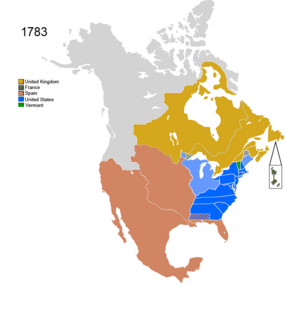 W
WThe Peace of Paris of 1783 was the set of treaties that ended the American Revolutionary War. On 3 September 1783, representatives of King George III of Great Britain signed a treaty in Paris with representatives of the United States of America—commonly known as the Treaty of Paris (1783)—and two treaties at Versailles with representatives of King Louis XVI of France and King Charles III of Spain—commonly known as the Treaties of Versailles (1783). The previous day, a preliminary treaty had been signed with representatives of the States General of the Dutch Republic, but the final treaty which ended the Fourth Anglo-Dutch War was not signed until 20 May 1784; for convenience, however, it is included in the summaries below.
 W
WThe Siege of Pensacola was two separate attempts in 1707 by English-supported Creek Indians to capture the town and fortress of Pensacola, one of two major settlements in Spanish Florida.
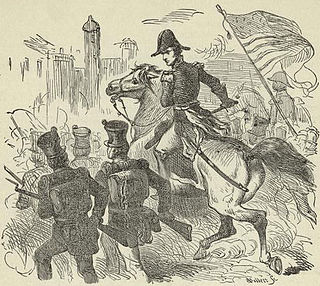 W
WThe Battle of Pensacola was a battle in the War of 1812, in which American forces fought against forces from the kingdoms of Britain and Spain who were aided by the Creek Indians and African-American slaves allied with the British. General Andrew Jackson led his infantry against British and Spanish forces controlling the city of Pensacola in Spanish Florida. Allied forces abandoned the city, and the remaining Spanish forces surrendered to Jackson.
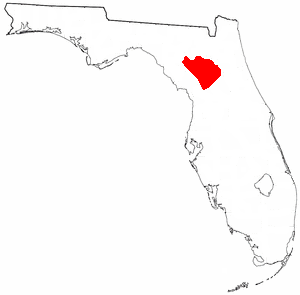 W
WThe Potano tribe lived in north-central Florida at the time of first European contact. Their territory included what is now Alachua County, the northern half of Marion County and the western part of Putnam County. This territory corresponds to that of the Alachua culture, which lasted from about 700 until 1700. The Potano were among the many tribes of the Timucua people, and spoke a dialect of the Timucua language.
 W
WThe Presidio Santa María de Galve, founded in 1698 by Spanish colonists, was the first European settlement of Pensacola, Florida after that of Tristan de Luna in 1559-1561. It was in the area of Fort Barrancas at modern-day Naval Air Station Pensacola, in northwestern Florida. The presidio included Fort San Carlos de Austria and an adjacent village.
 W
WQueen Anne's War (1702–1713) was the second in a series of French and Indian Wars fought in England's Thirteen American Colonies during the reign of Anne, Queen of Great Britain. In Europe, it is generally viewed as the American theater of the War of the Spanish Succession; in the Americas, it is more commonly viewed as a standalone conflict. It is also known as the Third Indian War or as the Second Intercolonial War in France.
 W
WThe Raid on St. Augustine was a military event during the Anglo-Spanish War in which the Spanish settlement of St. Augustine in Florida ) was captured in a small fight and burnt by an English expedition fleet led by Francis Drake. This was part of Francis Drake's Great Expedition and was his last engagement on the Spanish Main before Drake headed north for the Roanoke Colony. The expedition also forced the Spanish to abandon any settlements and forts in present-day South Carolina.
 W
WThe Republic of East Florida, also known as the Republic of Florida or the Territory of East Florida, was a putative republic declared by insurgents against the Spanish rule of East Florida, most of whom were from Georgia. John Houstoun McIntosh was chosen as "Director" of the self-named Patriots in March, 1812, to receive formal Spanish capitulation at Amelia Island. In July, while under the occupation of U.S. forces, the Patriots created a constitution of government that provided for an executive office, a legislative council, and a court system. Under its provisions, on July 27 McIntosh was named "Director of the Territory of East Florida". He was later succeeded in that office by Gen. Buckner Harris. Patriots wished neither independence nor statehood in the United States; they desired annexation by the U.S., connoted by the word "Territory" in their name of the country, and as expressly declared by the delegates at their constitutional convention.
 W
WSt. Augustine is a city in the Southeastern United States, on the Atlantic coast of northeastern Florida. Founded in 1565 by Spanish explorers, it is the oldest continuously inhabited European-established settlement in the United States proper.
 W
WSan Marcos de Apalache Historic State Park is a Florida State Park in Wakulla County, Florida organized around the historic site of a Spanish colonial fort, which was used by succeeding nations that controlled the area. The Spanish first built wooden buildings and a stockade in the late 17th and early 18th centuries here, which were destroyed by a hurricane.
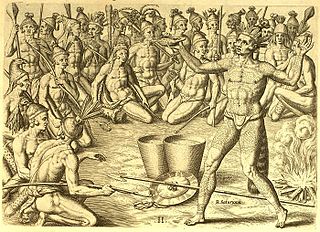 W
WThe Saturiwa were a Timucua chiefdom centered on the mouth of the St. Johns River in what is now Jacksonville, Florida. They were the largest and best attested chiefdom of the Timucua subgroup known as the Mocama, who spoke the Mocama dialect of Timucuan and lived in the coastal areas of present-day northern Florida and southeastern Georgia. They were a prominent political force in the early days of European settlement in Florida, forging friendly relations with the French Huguenot settlers at Fort Caroline in 1564 and later becoming heavily involved in the Spanish mission system.
 W
WRobert Searle was one of the earliest and most active of the English buccaneers on Jamaica.
 W
WThe Seminole Wars were three related military conflicts in Florida between the United States Army and the Seminole, a Native American group which had coalesced in Spanish Florida during the early 1700s. The fighting occurred between about 1816 and 1858, with two periods of uneasy truce between active conflict. Both in human and monetary terms, the Seminole Wars were the longest and most expensive of the Indian Wars in United States history.The First Seminole War began with General Andrew Jackson's excursions into West Florida and East Florida against the Seminoles after the conclusion of the War of 1812. The governments of Great Britain and Spain both expressed outrage over the invasion. However, Spain was unable to defend or control the territory, as several local uprisings and rebellions made clear. The Spanish Crown agreed to cede Florida to the United States per the Adams–Onís Treaty of 1819, and the transfer took place in 1821. According to the Treaty of Moultrie Creek of 1823, the Seminoles were required to leave northern Florida and were confined to a large reservation in the center of the Florida peninsula. The U.S. government enforced the treaty by building a series of forts and trading posts in the territory, mainly along the Gulf and Atlantic coasts. The Second Seminole War (1835–1842) was the result of the United States government attempting to force the Seminoles to leave Florida altogether and move to Indian Territory per the Indian Removal Act of 1830. Fighting began with the Dade battle in December 1835, and raids, skirmishes, and a handful of larger battles raged throughout the Florida peninsula over the next few years. At first, the outgunned and outnumbered Seminoles effectively used guerrilla warfare to frustrate the ever more numerous American military forces. In October 1836, General Thomas Sidney Jesup was sent to Florida to take command of the campaign. After futilely chasing bands of Seminole warriors through the wilderness, Jesup changed tactics and began seeking out and destroying Seminole farms and villages, a strategy which eventually changed the course of the war. Jesup also authorized the controversial captures of Seminole leaders Osceola and Micanopy under signs of truce. By the early 1840s, most of the Seminole population in Florida had been killed in battle, ravaged by starvation and disease, or relocated to Indian Territory. Several hundred Seminoles were allowed to remain in an unofficial reservation in southwest Florida. The Third Seminole War (1855–1858) was again the result of Seminoles responding to settlers and U.S. Army scouting parties encroaching on their lands, perhaps deliberately to provoke a violent response that would result in the removal of the last of the Seminoles from Florida. After an army surveying crew found and destroyed a Seminole plantation west of the Everglades in December 1855, Chief Billy Bowlegs led a raid near Fort Myers, setting off a conflict which consisted mainly of raids and reprisals, with no large battles fought. Once again, the American strategy was to destroy the Seminoles' food supply, and by 1858, most of the remaining Seminoles, weary of war and facing starvation, agreed to be sent to Oklahoma in exchange for promises of safe passage and cash payments. An estimated 500 Seminole still refused to leave and retreated deep into the Everglades and the Big Cypress Swamp to live on land that was unwanted by white settlers.
 W
WThe Siege of St. Augustine was a military engagement that took place during June–July 1740. It was a part of the much larger conflict known as the War of Jenkins' Ear, between Great Britain and Spain.
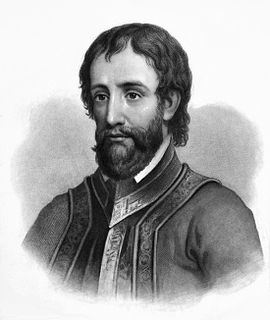 W
WHernando de Soto was a Spanish explorer and conquistador who was involved in expeditions in Nicaragua and the Yucatan Peninsula, and played an important role in Pizarro's conquest of the Inca Empire in Peru, but is best known for leading the first European expedition deep into the territory of the modern-day United States. He is the first European documented as having crossed the Mississippi River.
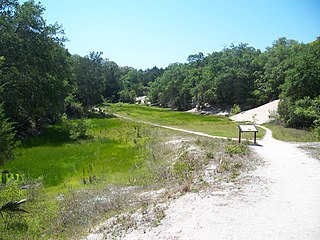 W
WThe Spanish Coquina Quarries are an historic site in St. Augustine Beach, Florida. They are located off A1A in Anastasia State Park. On February 23, 1972, they were added to the U.S. National Register of Historic Places.
 W
WDuring the Spanish colonization of the Americas, the Spanish Main was the collective term for the parts of the Spanish Empire that were on the mainland of the Americas and had coastlines on the Caribbean Sea or Gulf of Mexico. The term was used to distinguish those regions from the numerous islands Spain controlled in the Caribbean, which were known as the Spanish West Indies.
 W
WBeginning in the second half of the 16th century, the Kingdom of Spain established a number of missions throughout La Florida in order to convert the Native Americans to Christianity, to facilitate control of the area, and to prevent its colonization by other countries, in particular, England and France. Spanish Florida originally included much of what is now the Southeastern United States, although Spain never exercised long-term effective control over more than the northern part of what is now the State of Florida from present-day St. Augustine to the area around Tallahassee, southeastern Georgia, and some coastal settlements, such as Pensacola, Florida. A few short-lived missions were established in other locations, including Mission Santa Elena in present-day South Carolina, around the Florida peninsula, and in the interior of Georgia and Alabama.
 W
WThe Spanish missions in Georgia comprise a series of religious outposts established by Spanish Catholics in order to spread the Christian doctrine among the local Native Americans. The Spanish chapter of Georgia's earliest colonial history is dominated by the lengthy mission era, extending from 1568 through 1684. Catholic missions were the primary means by which Georgia's indigenous Native American chiefdoms were assimilated into the Spanish colonial system along the northern frontier of greater Spanish Florida.
 W
WSpanish West Florida was a province of the Spanish Empire from 1783 until 1821, when both it and East Florida were ceded to the United States.
 W
WThe Siege of St. Augustine occurred in Queen Anne's War during November and December 1702. It was conducted by English provincial forces from the Province of Carolina and their native allies, under the command of Carolina's governor James Moore, against the Spanish colonial fortress of Castillo de San Marcos at St. Augustine, in Spanish Florida.
 W
WThe Survivors' and Salvagers' Camp – 1715 Fleet is a historic site on Orchid Island, Florida. Survivors of the destroyed 1715 Spanish Treasure Fleet established a camp at this location while awaiting rescue. Salvors also used the site as they recovered sunken treasure from the 1715 fleet. Currently, the McLarty Treasure Museum occupies part of the area.
The Tequesta were a Native American tribe. At the time of first European contact they occupied an area along the southeastern Atlantic coast of Florida. They had infrequent contact with Europeans and had largely migrated by the middle of the 18th century.
 W
WWest Florida was a region on the northern coast of the Gulf of Mexico that underwent several boundary and sovereignty changes during its history. As its name suggests, it was formed out of the western part of former Spanish Florida, along with lands taken from French Louisiana; Pensacola became West Florida's capital. The colony included about two thirds of what is now the Florida Panhandle, as well as parts of the modern U.S. states of Louisiana, Mississippi, and Alabama.
 W
WThe West Florida Controversy included two border disputes that involved Spain and the United States in relation to the region known as West Florida over a period of 37 years. The first dispute commenced immediately after Spain received the colonies of West and East Florida from the Kingdom of Great Britain following the American Revolutionary War. Initial disagreements were settled with Pinckney's Treaty of 1795.